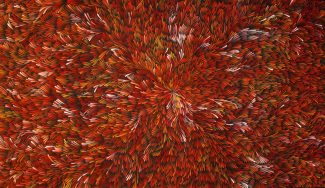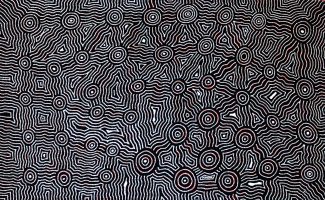Exhibit to Showcase Colorful Aboriginal Art
By
Westmont

The Westmont Ridley-Tree Museum of Art features the works of 15 contemporary Australian aboriginal painters in “Dreamkeepers: Contemporary Australian Aboriginal Art” from Nov. 29-Jan. 19. There will be a free, public opening reception on Thursday, Nov. 29, from 4-6 p.m. at the museum. The museum is open weekdays 10 a.m.-4 p.m. and Saturdays 11 a.m.-5 p.m. and will be closed for Christmas break, Dec. 17-Jan. 6. For more information, call (805) 565-6162.
The exhibition includes large and colorful paintings with energetic patterns and rhythmic compositions. The artwork is used to preserve the stories of Australian aboriginal people, the oldest surviving culture in the world. “It is my hope that our visitors will respond not only to the beauty of these contemporary art works but will learn something about aboriginal history, the relationships between individuals and families and the aboriginal people’s relationship to the land,” says Judy L. Larson, Askew professor of art history and director of the Westmont Ridley-Tree Museum of Art. “Each painting describes a unique narrative treasured by the family who owns that story.”

According to Australian aboriginal tradition, life on Earth began with the Dreaming. Rather than a point in history, it is something that informs the spiritual lives of aborigines and defines nearly every aspect of their day today. “There is a world behind the dots and lines of these paintings,” says Brandon Waybright ’09, Westmont museum outreach and education coordinator. “They represent history, growth, community, ceremony and even life itself.
“While Western cultures often focus on reproducing a visual impression, these works are made through reduction — distilling stories and activities to signs, symbols, points and lines. What is perhaps most difficult to grasp is that these paintings are created not only as representations, but as an outgrowth of spiritual experience. The painting emerges as a part of the Dreaming itself.”
Filed under
Arts at Westmont, Campus Events, Faculty and Staff, Press Releases